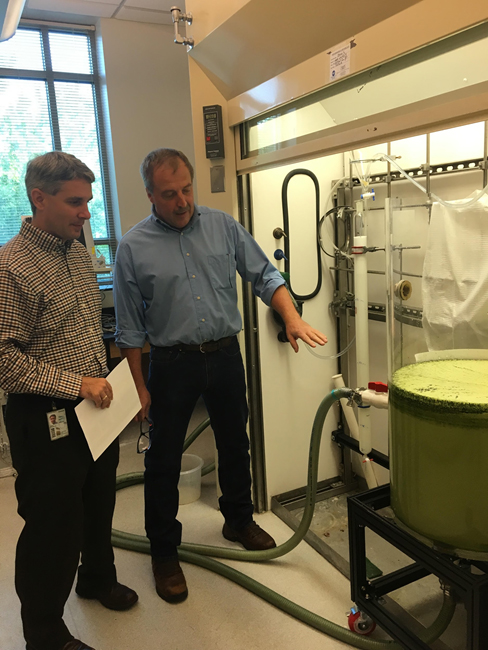
NCCOS is working with engineers at NABAS (Nano Air Bubble Aeration System) Technology to develop an environmentally sustainable method to eliminate harmful freshwater algae and their toxins. The method uses nanobubbles—bubbles smaller than the width of a single human hair—to aerate water bodies. Unlike ordinary bubbles that rise and burst at the surface of the water, nanobubbles implode under the pressure of the water, releasing oxygen and ozone that help dissolve harmful algae.
NCCOS chemist Dr. Peter Moeller recently conducted laboratory validation of the method’s efficacy in reducing harmful algae and toxins, and is now working to establish application parameters that will ensure wildlife safety. Moeller also helped test the ozone nanobubble system on a freshwater algal bloom near Fort Myers Beach, Florida. Within 48 hours of treatment, the eight-acre pond was well-oxygenated and free of algae, with no apparent harm to other aquatic life in the pond.
In the coming months, Moeller will analyze time-series water samples treated with nanobubbles to characterize chemical changes during the remediation process. Future testing of the method may yield breakthroughs for other natural resource management issues, such as treating ballast water, farm waste, or addressing invasive species.
For more information, contact Peter.Moeller@noaa.gov.

